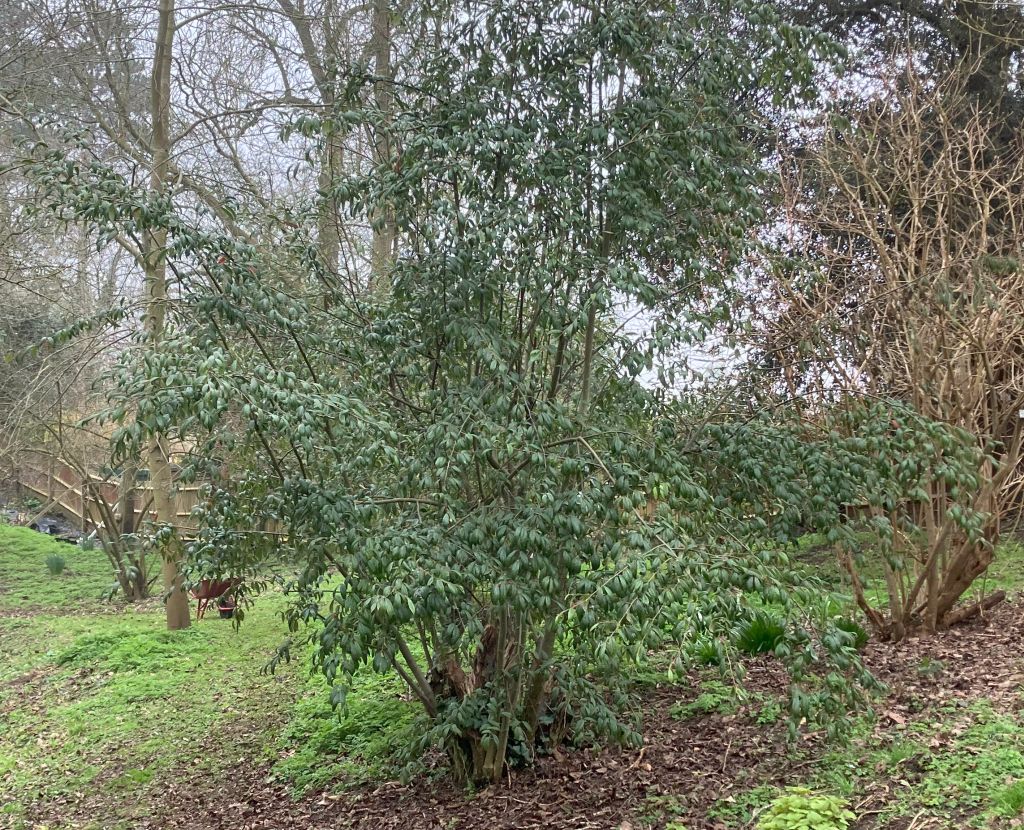#155 WILLOW-LEAVED COTONEASTER
Cotoneaster salicifolius var. rugosus

Planted: 1922
To be found between the western end of the Central Path and the northern end of the Viburnum Walk
| Distribution: | Native to mixed forests, and open places in western China. It is commonly cultivated in temperate climates worldwide. Cultivars have been bred in a variety of forms. |
| Planting Date: | 1931, purchased from James Smith, Tansley, Matlock, Derbyshire |
| Growth Habit: | Evergreen to semi-evergreen, low-lying, small to medium-sized shrub with an arched branching habit. Specimens growing in the wild are larger. |
| Bark: | Gray-brown, its stemsare thin, and its root system is sparse. |
| Leaf: | Alternate, simple, long, lanceolate, dark green and resemble those of willow trees and have fine gray hairs on their undersides. Up to 7.5 cm long and 3.5 cm wide, the veins numbering six to ’ twelve pairs. During colder months, they turn maroon. |
| Flowers: | In June, it bears many flowers, compound corymbs of white, 5 to 6 mm. |
| Fruit: | Small, showy, coral red pomes, ripening in September to October, and enduring into the winter. Usually contain 2 stones. |
| Toxicity: | Berries toxic to humans. However no detrimental effects to birds that eat and disperse the berries. |
| Potential tree size | Up to 5m, in the wild |
| Uses: | Ornamental |
| Plant Hunter: | Introduced by Ernest Henry Wilson (1876 – 1930) from western Hupeh province, China. |
| Introduction Date: | 1907 |
| Anecdotes and Comments: | The scientific name ‘salicifolius’ means ‘with leaves like willows’. |